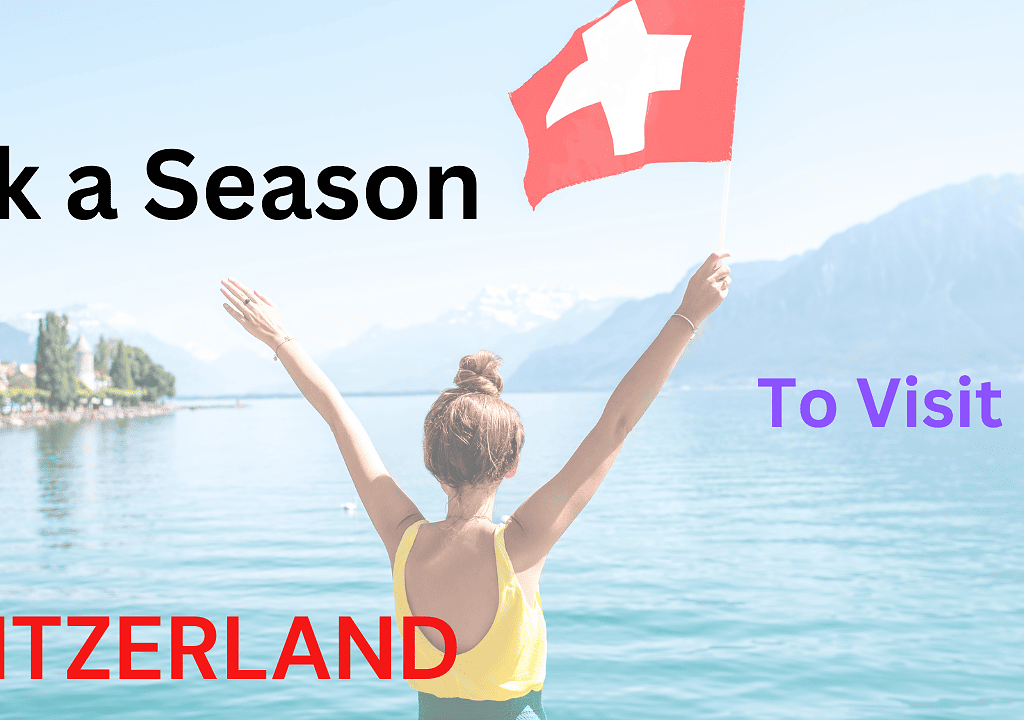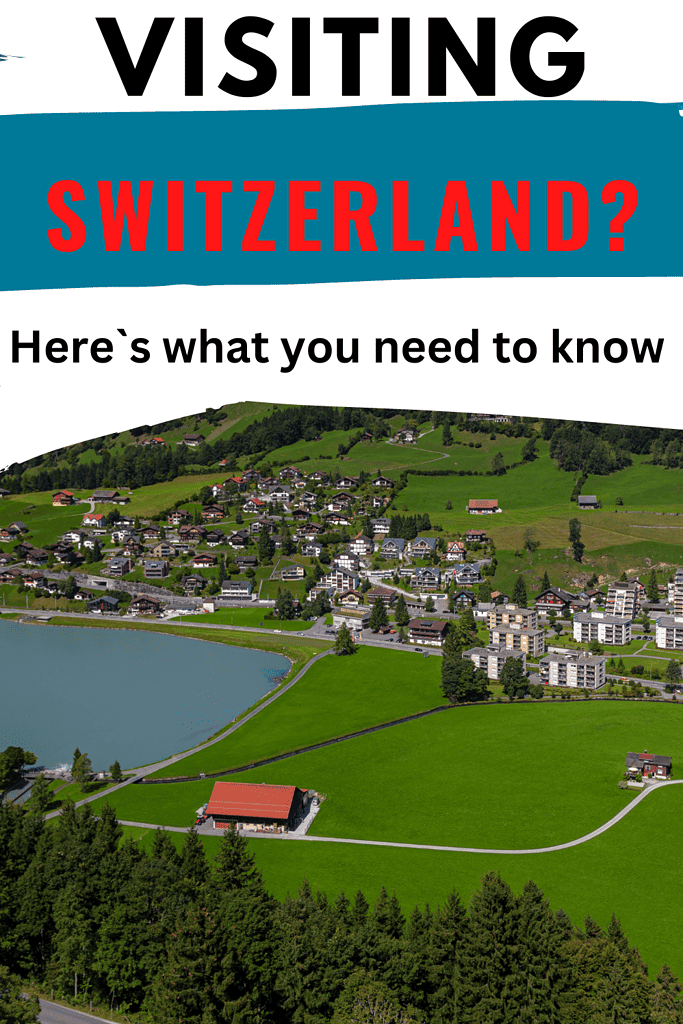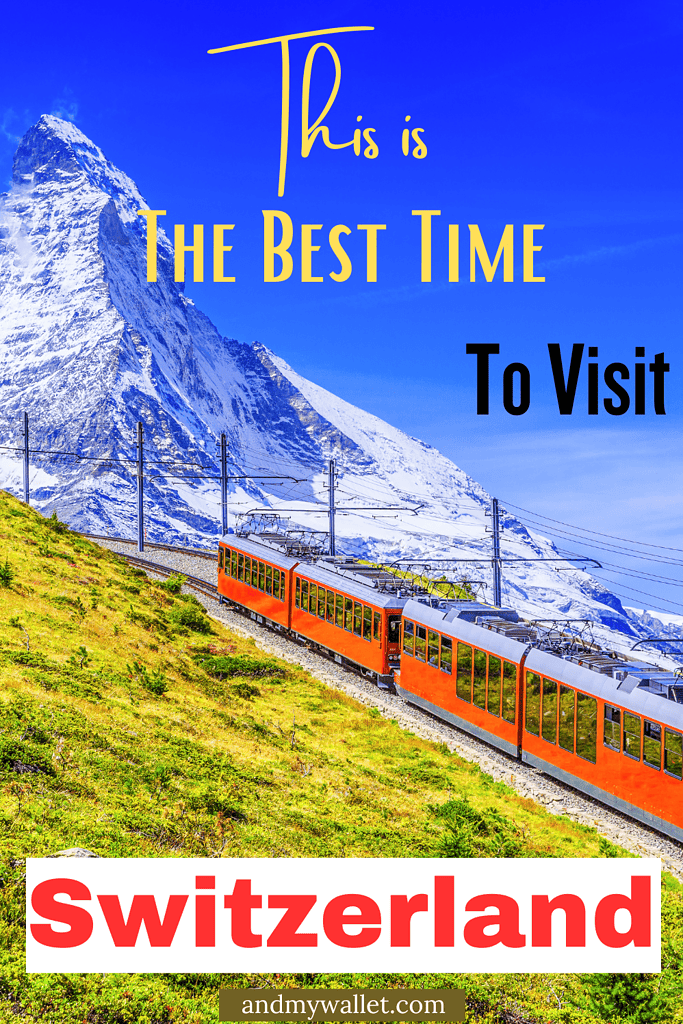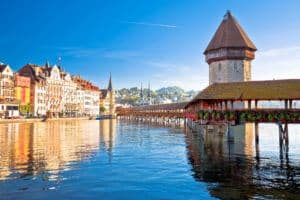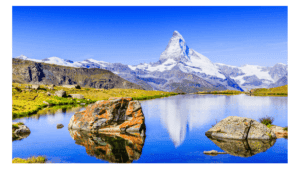Zurich’s central location makes it an ideal base for exploring Switzerland’s diverse attractions.
Within a few hours by train, you can reach picturesque towns, stunning mountain vistas, and cultural landmarks.
These day trips offer a perfect blend of convenience and adventure, allowing you to experience any popular destination and the best of Switzerland without changing hotels.
Switzerland’s efficient rail network connects Zurich to numerous destinations worth visiting.
You can easily plan trips to iconic places like Lucerne, Bern the capital of switzerland, or Interlaken using public transport. The trains are clean, and punctual, and offer scenic routes through the Swiss countryside.
Whether you’re interested in history, nature, or urban exploration, there’s a day trip from Zurich to suit your preferences.
You’ll find options ranging from relaxing lakeside towns to thrilling mountain excursions, historical landmarks and popular tourist attractions all accessible within a day’s journey from the city.
Planning Your Day Trip Adventure
Zurich’s central location makes it an ideal starting point for exploring Switzerland by train.
The efficient Swiss rail system connects you to stunning destinations within just a few hours.Nature lovers have a great opportunity to visit places like Bernese oberland or Swiss serene lakes and still be back to the hotel to spend the night.
Understanding The Swiss Travel System
Switzerland’s public transport network is renowned for its punctuality and coverage.
Swiss Trains(SBB) run frequently between major cities and tourist hotspots. You’ll find clear timetables at stations and online platforms.
Most day trip destinations from Zurich are reachable within 1-2 hours by train. Popular routes include Lucerne (45 minutes), Bern (1 hour), and Interlaken (2 hours).
These journeys offer scenic views of the Swiss countryside.
The SBB mobile app is a useful tool for planning your trips. It provides real-time updates, platform information, and ticket purchasing options and to check easy day trips.
Choosing the Right Rail Pass
Several rail pass options are available for visitors planning multiple-day trips from Zurich. The Swiss Travel Pass or simply called Swiss Pass offers unlimited travel on trains, buses, and boats across Switzerland.
For shorter stays, consider the Swiss Half Fare Card. It gives you 50% off all train tickets and is valid for a month. This can be cost-effective if you’re planning 2-3 day trips.
If you’re focusing on the Zurich area, look into regional day passes. These offer unlimited travel within specific zones at a fixed price.Yes you can have a great day trip without leaving Zurich.
Compare pass prices with individual ticket costs based on your planned itinerary to any historic towns you may want to visit.
Factor in any mountain railways or cable cars you might use, as some passes include discounts on these.
You may like
10 days Swiss travel itinerary
The best time to visit Switzerland
Discovering Lucerne
Lucerne offers a perfect blend of history, culture, and natural beauty the shores of Lake Lucerne are busy with sightseeing tourists any given day.
This charming Swiss city in Central Switzerland captivates visitors with its picturesque Old Town, iconic landmarks, and stunning alpine scenery.
Exploring the Historical Old Town
Wander through Lucerne’s well-preserved Historic Old Town, where medieval architecture meets modern charm. Cobblestone streets lead you past colorful frescoed buildings and quaint squares.
Don’t miss the Museggmauer, a 14th-century wall with nine towers offering panoramic views of the city and Lake Lucerne. The Lion Monument, (Löwendenkmal) a poignant rock relief commemorating Swiss Guards, is another must-see.
Explore the Jesuit Church during your city tours, an impressive example of Swiss Baroque architecture. Its ornate interior and lakeside location make it a standout attraction that you can visit without a tour guide.
The Iconic Chapel Bridge
Kapellbrücke, or Chapel Bridge, is Lucerne’s most recognizable landmark. This wooden covered bridge spans the Reuss River, connecting the Old Town to the right bank.
Built in the 14th century, it’s Europe’s oldest surviving truss bridge. Walk across to admire the triangular paintings depicting scenes from Swiss and local history.
The adjacent Water Tower, once used as a prison and torture chamber, now houses a gift shop. Together, the bridge and tower create an unforgettable skyline.
Majestic Mount Pilatus
For breathtaking views, take a trip up Mount Pilatus. The world’s steepest cogwheel train carries you to the summit during the summer months.
At the top, you’ll find hiking trails doable for those looking for short hikes, restaurants, and panoramic vistas of the Swiss Alps and Lake Lucerne.
On clear days in the summer season, you can see as far as Germany’s Black Forest.
For a thrilling descent, ride the aerial cableway and gondola back down to Kriens. This combination of transport methods is known as the “Golden Round Trip” and offers diverse perspectives of the stunning landscape.
Exploring the Rhine Region
The Rhine region offers stunning natural wonders and charming medieval towns just a short train ride from Zurich. You’ll encounter Europe’s largest waterfall and step back in time to a beautifully preserved Renaissance town.
The Mesmerizing Rhine Falls
Located near Schaffhausen, the Rhine Falls will take your breath away. At 150 meters wide and 23 meters high, it’s Europe’s largest waterfall.
You can feel the power of 700 cubic meters of water rushing over the rocks every second.
Take a boat ride to the central rock for an up-close view. For a panoramic perspective, visit Schloss Laufen or Schlössli Wörth and watch from the viewing platform.
The falls are especially spectacular in June and July when snowmelt increases the water volume.
Don’t miss the visitor center to learn about the falls’ geological history. Summer evenings bring a colorful light show, illuminating the cascading water.
Get your guide to the Rhine Falls here
Stein am Rhein: A Medieval Gem
This picturesque town on the Rhine River will transport you to another era. Stein am Rhein boasts remarkably well-preserved medieval architecture and stunning frescoed buildings.
Stroll through the Rathausplatz, the town’s main square. You’ll be surrounded by colorful half-timbered houses adorned with intricate murals.
The Town Hall, dating back to 1539, showcases impressive Renaissance frescoes.
Visit Hohenklingen Castle, a medieval castle for panoramic views of the town and the Rhine.
The nearby St. George’s Abbey, founded in 1007, offers a glimpse into monastic life. Don’t forget to sample local wines from the surrounding vineyards.
Bern: The Capital’s Charms
Bern offers a captivating blend of history and culture just a short train ride from Zurich is worth a full-day excursion.
The city’s well-preserved medieval architecture and relaxed atmosphere make it an ideal day trip destination.
Bern’s UNESCO World Heritage Old Town
Wander through Bern’s enchanting Old Town, a UNESCO World Heritage Site.
You’ll find yourself surrounded by 6 kilometers of covered arcades, known as “Lauben,” perfect for exploring in any weather.
Admire the stunning 15th and 16th-century fountains adorned with colorful statues in this unesco-listed old town.
Take a stroll along the River Aare, which wraps around the city center. For a unique perspective, head to the Rosengarten(rose garden).
This beautiful park offers panoramic views of the Old Town’s red-tiled roofs and spires.
Don’t miss the Bear Park, home to Bern’s beloved symbol. You can watch the bears play and swim in their spacious enclosure by the river.
As already mentioned, Bern is worth a full-day trip for you to admire the beautiful architecture and all the surrounding areas.
Famous Zytglogge Clock Tower
The Zytglogge, Bern’s iconic clock tower, stands as a masterpiece of medieval engineering. Built in the early 13th century, it has served as a guard tower, prison, and civic memorial.
Every hour, watch the charming mechanical figures come to life. The clock’s astronomical dial displays the zodiac signs, phases of the moon, and position of the sun.
You can join a guided tour to see the inner workings of this remarkable timepiece. Learn about its intricate mechanisms and the skilled craftsmen who maintained it over the centuries.
Jungfrau Region Adventures
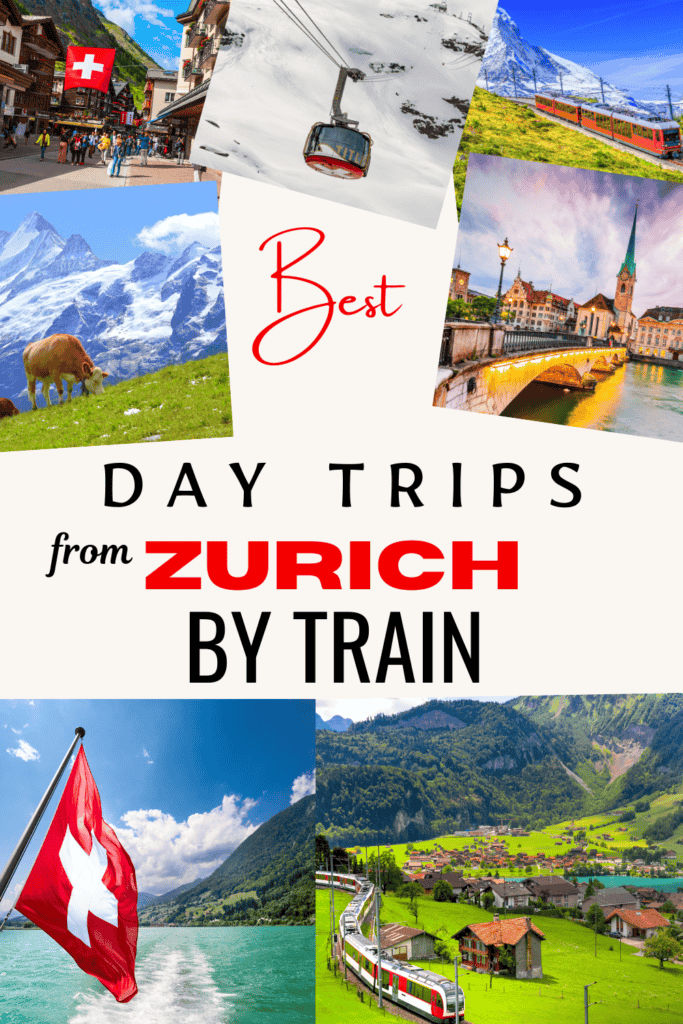
The Jungfrau region offers breathtaking alpine scenery and thrilling experiences. You can explore iconic peaks, picturesque valleys, and stunning glaciers on a day trip from Zurich which is a good starting point.
Jungfraujoch: The Top of Europe
At 3,454 meters above sea level, Jungfraujoch is Europe’s highest railway station. You’ll journey through tunnels in the Eiger and Mönch mountains to reach this spectacular viewpoint.
The Sphinx Observatory provides panoramic views of the Aletsch Glacier and surrounding peaks. Don’t miss the Ice Palace, a fascinating network of ice sculptures and walkways carved into the glacier.
For a unique experience, try the Ice Flyer chairlift, which glides over the glacier’s crevasses. The Alpine Sensation exhibition offers insights into the region’s history and development.
Grindelwald and Lauterbrunnen Valleys
These charming valleys serve as gateways to the Jungfrau region. Grindelwald, nestled beneath the Eiger’s north face, is a popular base for hiking and winter sports.
You can take cable cars to scenic viewpoints like First or Männlichen for stunning vistas of the Swiss Alps.
The Grindelwald-First Cliff Walk offers a thrilling suspended walkway with panoramic views.
Lauterbrunnen, known for its 72 waterfalls, is a nature lover’s paradise. The famous Staubbach Falls plunges 300 meters from an overhanging rock face.
For an adrenaline rush, try paragliding over the valley or visit the Trümmelbach Falls, a series of ten glacier waterfalls inside the mountain.
I do try not to have a favorite but I have to admit this is one of the best day trips from Zurich by train and should be on your top day trips,the train journey is already worth it.
Leisure Activities Around Lake Zurich
Lake Zurich offers a variety of outdoor activities for visitors to enjoy. From relaxing boat cruises to thrilling water sports and panoramic mountain views, there’s something for everyone and it`s hard to create an exhaustive list.
Boat Cruises and Water Sports
Lake Zurich provides excellent opportunities for water-based activities.
You can embark on scenic boat cruises that offer stunning views of the shoreline and surrounding mountains. These trips often include stops at charming lakeside towns like Rapperswil-Jona.
For more active pursuits, try your hand at stand-up paddleboarding or kayaking. Rental shops are available along the lakeshore, making it easy to get on the water.
If you’re feeling adventurous, water skiing and wakeboarding are popular options in lake Zürich during the warmer months.
Swimming is another great way to enjoy the lake.
You’ll find several public beaches and lidos where you can take a refreshing dip or sunbathe on warm days.Remember there is also limmat river where you can go swimming in the summer months.
Uetliberg Mountain for Panoramic Views
Uetliberg, often called Zurich’s local mountain, offers breathtaking panoramic views of the city, Lake Zurich, and the Alps.
You can reach the summit by taking a short train ride from Zurich’s main station.
At the top, you’ll find an observation tower for even more spectacular vistas. The area is a popular spot for hiking and picnicking, with well-marked trails suitable for all fitness levels.
Mountain biking enthusiasts will appreciate the challenging trails on Uetliberg. You can rent bikes at the base of the mountain or bring your own for an exhilarating ride through the forest.
During winter, Uetliberg transforms into a sledding paradise. You can rent sleds and enjoy the thrilling descent back towards the city.
Cultural Immersion in Basel
Basel offers a rich cultural experience with its world-class museums and beautifully preserved Old Town. You’ll find yourself surrounded by centuries of history and art in this charming Swiss city.
Art Galleries and Museums
Basel boasts an impressive array of museums and galleries. The Kunstmuseum Basel houses one of Europe’s oldest public art collections, featuring works from the 14th century to the present day.
You’ll encounter masterpieces by Holbein, Picasso, and Van Gogh.
For contemporary art lovers, the Fondation Beyeler is a must-visit. This modern museum showcases rotating exhibitions of 20th and 21st-century art in a stunning Renzo Piano-designed building.
The unique Tinguely Museum celebrates the work of Swiss artist Jean Tinguely. You’ll be captivated by his kinetic sculptures and interactive installations. The Natural History Museum in Basel is reachable by train with a travel time of just 1 hour.
The Dynamic Old Town of Basel
Basel’s Old Town is a living museum of architectural styles spanning centuries. As you wander through its narrow cobblestone streets, you’ll discover medieval buildings alongside Renaissance fountains.
The Marktplatz, with its vibrant red Rathaus (Town Hall), forms the heart of the Old Town. You can admire its intricate frescoes and climb the tower for panoramic views of the city.
Don’t miss the Basel Minster, a striking example of Romanesque and Gothic architecture. Its colorful roof tiles and twin spires dominate the skyline.
For a taste of local life, visit the lively Barfüsserplatz, lined with cafes and shops. You’ll find yourself immersed in the city’s bustling atmosphere.
If you happen to be in Switzerland in December, don`t miss the Basel Christmas market.
Encounters with Nature and History in Baden
Baden offers a perfect blend of natural relaxation and historical charm. This charming town near Zurich provides unique experiences for day-trippers seeking both rejuvenation and cultural insights.
Enjoying the Thermal Baths
Baden’s thermal baths are a must-visit attraction. You’ll find multiple options to soak in the mineral-rich waters, known for their therapeutic properties.
The modern Fortyseven° spa complex offers indoor and outdoor pools with stunning views of the surrounding landscape.
For a more traditional experience, try the historic Bäderquartier. Here, you can immerse yourself in centuries-old bathing culture.
The waters, naturally heated to 47°C, are rich in minerals that may help soothe muscle aches and promote relaxation.
Medieval Architecture and Rathausplatz
Baden’s old town is a treasure trove of medieval architecture. As you stroll through the narrow streets, you’ll encounter well-preserved buildings dating back to the Middle Ages. The Rathausplatz, or Town Hall Square, is the heart of Baden’s historic center.
The impressive 15th-century Town Hall dominates the square with its distinctive red facade.
Nearby, you’ll find the Stadtturm, a medieval tower offering panoramic views of Baden and the surrounding region.
Don’t miss the chance to explore the charming shops and cafes that line the square.
Many buildings feature intricate frescoes and ornate details, providing glimpses into Baden’s rich past.
The Liechtenstein Experience
Liechtenstein offers a unique blend of history, culture, and natural beauty. This tiny principality nestled between Switzerland and Austria provides an unforgettable day trip from Zurich by train.
Sightseeing in Vaduz
Vaduz, Liechtenstein’s capital, is a charming town filled with attractions. Visit the iconic Vaduz Castle, perched on a hilltop overlooking the city.
While it’s not open to the public, you can admire its stunning exterior and take photos.
Explore the Liechtenstein National Museum to learn about the country’s rich history and culture. The museum houses artifacts dating back to prehistoric times.
Art enthusiasts will enjoy the Kunstmuseum Liechtenstein, showcasing modern and contemporary works.
Don’t miss the Parliament Building and the Cathedral of St. Florin for their impressive architecture.
For a taste of local flavors, visit the Hofkellerei, the Prince of Liechtenstein Winery.
Sample some of their exquisite wines and take a bottle home as a souvenir. Did I mention you can use Swiss Francs in Liechtenstein?No need of foreign currency here.
The Green Mountains of Liechtenstein
Liechtenstein’s Alpine scenery is a highlight of your visit. Take a cable car ride up to Malbun, a picturesque mountain village offering breathtaking views of the surrounding peaks.
In summer, enjoy hiking trails suitable for all levels. The Princes’ Way Hike is a popular route, offering panoramic vistas of the Rhine Valley and Swiss Alps.
Winter transforms Liechtenstein’s snow-capped mountains into a snowy wonderland. Malbun becomes a small but charming ski resort, perfect for a day on the slopes.
For a unique experience, hike to the Three Sisters mountain range. These distinctive peaks form the border between Liechtenstein and Austria, providing spectacular photo opportunities.
Don’t forget to get your passport stamped at the Liechtenstein Center in Vaduz – a quirky souvenir from one of the world’s smallest countries.
Appenzell and St. Gallen: Traditional Swiss Essence
Appenzell and St. Gallen offer a glimpse into authentic Swiss culture and landscapes.
These charming destinations showcase picturesque Alpine scenery, rich folklore, and historic architecture.
Appenzell’s Folklore and Alpine Landscapes
Appenzell captivates visitors with its colorful traditions and stunning natural beauty.
You’ll find yourself surrounded by rolling hills and the majestic Alpstein mountains in this part known as the heart of switzerland.
Take a cable car ride to Ebenalp for breathtaking views of the region.
Don’t miss the town’s main square, where you can admire the beautifully painted facades of traditional buildings.
Visit the local museum to learn about Appenzell’s unique customs and folk art.
For outdoor enthusiasts, hiking trails abound in the area. The Alpine Sensation route offers a moderate trek with panoramic vistas of the countryside.
St. Gallen’s Abbey District and Galleries
St. Gallen boasts a UNESCO World Heritage site in its Abbey District. You’ll be awestruck by the ornate Baroque cathedral and the world-renowned Abbey Library, home to medieval manuscripts.
Stroll through the old town’s pedestrian zone, lined with charming shops and cafes. Art lovers will appreciate the city’s galleries, showcasing both local and international works.
Visit the Textile Museum to explore St. Gallen’s rich history in lace and embroidery production. For a modern twist, check out the contemporary art exhibitions at the Kunsthalle.
Conclusion on The Best Day Trips from Zurich by Train
Now I did not forget places like Mount Titlis, Lake Lugano, Geneva, Mount Rigi, and other visit-worthy places.
This is not a complete guide but I wanted to mention places you can visit for a day and still be back to your hotel in Zurich, Switzerland’s largest city at the end of the day.
Places like mt. titlis may be hard to visit for a day from Zurich by train, doable yes, practical? No.

